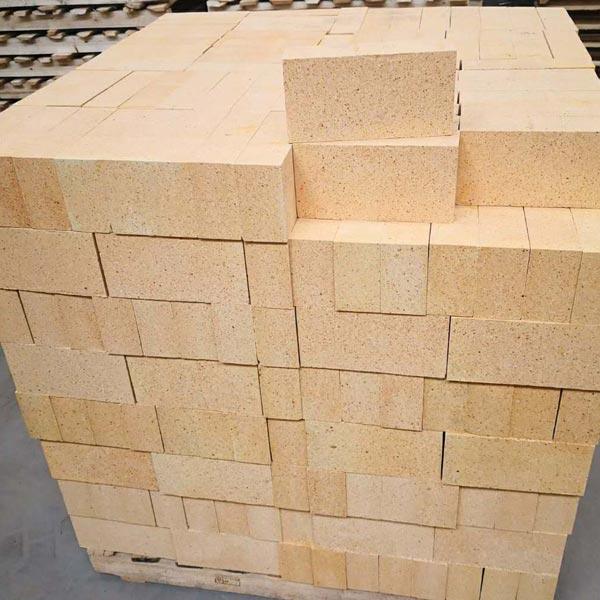
High alumina refractory bricks are the backbone of high-temperature industrial processes. By understanding their properties, applications, and supplier selection criteria, businesses can enhance operational efficiency and reduce downtime. For industries seeking durable, cost-effective solutions, partnering with certified refractory materials suppliers in China ensures access to cutting-edge technology and reliable supply chains.
High Alumina Refractory Bricks: Key Features, Applications, and How to Choose Reliable Suppliers in China
High alumina refractory bricks are indispensable in industries requiring extreme heat resistance, such as steelmaking, cement production, and glass manufacturing. As a critical component of industrial furnace linings, these bricks ensure operational efficiency, safety, and longevity. This article explores the unique properties of high alumina bricks, addresses common industry questions, and guides you in selecting trusted suppliers of refractory materials in China.
High alumina refractory bricks are composed of bauxite and refractory clay, with alumina (Al₂O₃) content ranging from 48% to 90%. They are machine-molded and fired at high temperatures to achieve exceptional durability and resistance to thermal stress, chemical corrosion, and mechanical wear.
Key Features:
High Refractoriness: Withstand temperatures up to 1,790–1,810°C, making them ideal for blast furnaces, rotary kilns, and ladle.
Low Thermal Conductivity: Minimize heat loss and improve energy efficiency in industrial processe.
Excellent Mechanical Strength: Cold crushing strength (CCS) ranges from 39 MPa to 100 MPa, ensuring structural integrity under heavy load.
Chemical Stability: Resist acidic and basic slag erosion, extending furnace lifespa.
Low Creep Rate: Maintain shape and performance under prolonged high-temperature exposur.
High alumina bricks are tailored to diverse industrial needs:
Steel Industry: Lining blast furnaces, hot blast stoves, and ladle.
Cement Production: Withstand abrasive conditions in rotary kilns and preheater.
Glass Manufacturing: Used in glass tank furnaces for superior thermal shock resistanc.
Chemical Plants: Protect reactors and incinerators from corrosive environment.
What’s the Difference Between High Alumina and Fireclay Bricks?
High alumina bricks contain ≥48% Al₂O₃, offering higher refractoriness and mechanical strength than fireclay bricks (typically 30–45% Al₂O₃). They also exhibit better slag resistance and thermal stabilit.
How to Extend the Service Life of High Alumina Bricks?
Avoid thermal shock by preheating furnaces gradually. Use grouting materials to repair cracks and maintain consistent lining thicknes.
Why Does Performance Decline Over Time?
Causes include improper Al₂O₃ content ratios, exposure to incompatible slag chemistry, or physical abrasion. Regular inspections and quality-controlled materials mitigate these issue.
What’s the Role of Al₂O₃ Content?
Higher Al₂O₃ (e.g., 75–90%) enhances refractoriness and load-bearing capacity, ideal for ultra-high-temperature applications like electric arc furnace.
How Are They Manufactured?
Raw materials are mixed, high-pressure molded, and sintered at 1,430–1,550°C in oxidizing kilns. Additives like silicon carbide (SiC) improve thermal shock resistanc.
China dominates global refractory production, offering:
Cost Efficiency: Competitive pricing due to large-scale manufacturing and raw material availability (e.g., bauxite reserves in Shanxi and Henan.
Customization: Suppliers like Yuying Refractory provide tailored brick dimensions, Al₂O₃ grades, and bulk density option.
Quality Assurance: ISO 9001-certified factories ensure consistent performance metrics, such as apparent porosity ≤23% and CCS ≥49 MP.
Global Logistics: Major ports like Qingdao and Tianjin streamline exports, with delivery times as short as 15–25 day.
Verify Certifications: Ensure suppliers hold ISO 9001 and provide third-party test report.
Evaluate Technical Support: Leading manufacturers like Gangtai Refractory offer R&D collaboration and on-site troubleshootin.
Request Samples: Test bricks for porosity, thermal shock resistance, and chemical compatibilit.
Review MOQ Flexibility: Suppliers like Yuying Refractory accept trial orders with no minimum quantity, reducing upfront risk.
Recent advancements focus on sustainability and performance:
Low-Creep Formulations: Incorporate kyanite and mullite to reduce high-temperature deformatio.
Eco-Friendly Production: PAH-free binders and recycled raw materials align with global emissions standard.
AI-Driven Diagnostics: Predictive maintenance tools monitor brick wear in real time, optimizing replacement schedule.
High alumina brick is one of the indispensable basic refractory materials in the upper and middle parts of blast furnace body in iron and steel industry
Common low-creep high-alumina bricks can be used in blast furnace hot blast stoves, as well as other industrial kilns, and can also be made into low-creep high-alumina bricks of different sizes according to specific construction requirements, such as lattice bricks, special-shaped bricks, anchor bricks, etc. , mainly used in industrial kilns in long-term high temperature environments
high alumina refractory bricks is mainly used around the furnace cover, electrode holes and exhaust holes of electric furnaces, and its service life is 1 to 2 times longer than that of silica bricks.
Insulating high alumina refractory bricks mainly refer to refractory products with an aluminum content of more than 48%. They are also called lightweight high-alumina bricks or heat-insulating high-alumina bricks due to their advantages of low bulk density, light weight, and good heat insulation effect. . It is a kind of thermal insulation refractory brick commonly used in high temperature industrial kilns and thermal equipment.
Magnesia alumina bricks use periclase as the main crystal phase and magnesia-alumina spinel as the matrix. They are better in thermal shock resistance than magnesia bricks. In order to improve the thermal shock resistance of magnesia bricks, alumina or alumina is introduced into the ingredients. Bauxite clinker fine powder to form a magnesia-alumina sharp stone matrix, thereby making magnesia-alumina bricks
Magnesia chrome bricks are refractory products with magnesia (MgO) and chromium trioxide (Cr2O3) as the main components, and periclase and spinel as the main mineral components. The main raw materials for the manufacture of magnesia-chrome bricks are sintered magnesia and chromite.
Anti stripping high alumina bricks are referred to as anti-stripping bricks or anti-stripping refractory bricks. Anti-stripping high-alumina bricks are widely used in my country's new dry process kiln, Libore kiln and wet process kiln, including kiln door cover, rising flue, cooling zone, decomposition zone, safety belt, transition zone, coolant rear Walls and side walls and beams with curved ceilings.
Yuying Refractory produces a complete set of refractories for electrolyzers, and the new impermeable bricks are used in conjunction with impermeable castables
High alumina brick is one of the indispensable basic refractory materials in the upper and middle parts of blast furnace body in iron and steel industry
Common low-creep high-alumina bricks can be used in blast furnace hot blast stoves, as well as other industrial kilns, and can also be made into low-creep high-alumina bricks of different sizes according to specific construction requirements, such as lattice bricks, special-shaped bricks, anchor bricks, etc. , mainly used in industrial kilns in long-term high temperature environments
high alumina refractory bricks is mainly used around the furnace cover, electrode holes and exhaust holes of electric furnaces, and its service life is 1 to 2 times longer than that of silica bricks.
Insulating high alumina refractory bricks mainly refer to refractory products with an aluminum content of more than 48%. They are also called lightweight high-alumina bricks or heat-insulating high-alumina bricks due to their advantages of low bulk density, light weight, and good heat insulation effect. . It is a kind of thermal insulation refractory brick commonly used in high temperature industrial kilns and thermal equipment.
Magnesia alumina bricks use periclase as the main crystal phase and magnesia-alumina spinel as the matrix. They are better in thermal shock resistance than magnesia bricks. In order to improve the thermal shock resistance of magnesia bricks, alumina or alumina is introduced into the ingredients. Bauxite clinker fine powder to form a magnesia-alumina sharp stone matrix, thereby making magnesia-alumina bricks
Magnesia chrome bricks are refractory products with magnesia (MgO) and chromium trioxide (Cr2O3) as the main components, and periclase and spinel as the main mineral components. The main raw materials for the manufacture of magnesia-chrome bricks are sintered magnesia and chromite.
Anti stripping high alumina bricks are referred to as anti-stripping bricks or anti-stripping refractory bricks. Anti-stripping high-alumina bricks are widely used in my country's new dry process kiln, Libore kiln and wet process kiln, including kiln door cover, rising flue, cooling zone, decomposition zone, safety belt, transition zone, coolant rear Walls and side walls and beams with curved ceilings.
Yuying Refractory produces a complete set of refractories for electrolyzers, and the new impermeable bricks are used in conjunction with impermeable castables
High alumina brick is one of the indispensable basic refractory materials in the upper and middle parts of blast furnace body in iron and steel industry
Common low-creep high-alumina bricks can be used in blast furnace hot blast stoves, as well as other industrial kilns, and can also be made into low-creep high-alumina bricks of different sizes according to specific construction requirements, such as lattice bricks, special-shaped bricks, anchor bricks, etc. , mainly used in industrial kilns in long-term high temperature environments
high alumina refractory bricks is mainly used around the furnace cover, electrode holes and exhaust holes of electric furnaces, and its service life is 1 to 2 times longer than that of silica bricks.
Insulating high alumina refractory bricks mainly refer to refractory products with an aluminum content of more than 48%. They are also called lightweight high-alumina bricks or heat-insulating high-alumina bricks due to their advantages of low bulk density, light weight, and good heat insulation effect. . It is a kind of thermal insulation refractory brick commonly used in high temperature industrial kilns and thermal equipment.
Magnesia alumina bricks use periclase as the main crystal phase and magnesia-alumina spinel as the matrix. They are better in thermal shock resistance than magnesia bricks. In order to improve the thermal shock resistance of magnesia bricks, alumina or alumina is introduced into the ingredients. Bauxite clinker fine powder to form a magnesia-alumina sharp stone matrix, thereby making magnesia-alumina bricks
Magnesia chrome bricks are refractory products with magnesia (MgO) and chromium trioxide (Cr2O3) as the main components, and periclase and spinel as the main mineral components. The main raw materials for the manufacture of magnesia-chrome bricks are sintered magnesia and chromite.
Anti stripping high alumina bricks are referred to as anti-stripping bricks or anti-stripping refractory bricks. Anti-stripping high-alumina bricks are widely used in my country's new dry process kiln, Libore kiln and wet process kiln, including kiln door cover, rising flue, cooling zone, decomposition zone, safety belt, transition zone, coolant rear Walls and side walls and beams with curved ceilings.
Yuying Refractory produces a complete set of refractories for electrolyzers, and the new impermeable bricks are used in conjunction with impermeable castables



